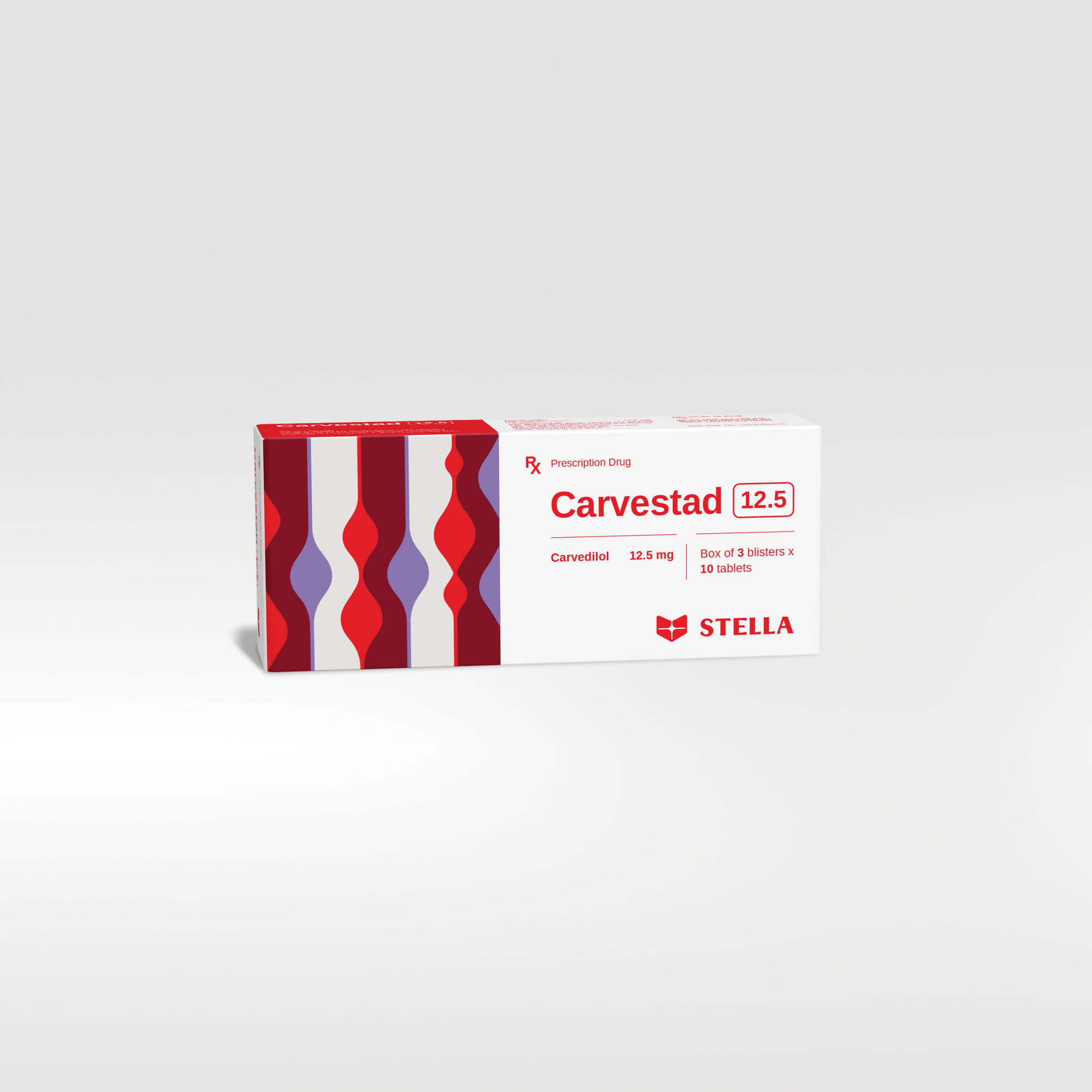Carvestad 12.5 Rx
Carvedilol is a nonselective β-adrenergic blocking agent with selective α1– adrenergic blocking activity. Vasodilation resulting in reduced total peripheral resistance mediated through carvedilol’s α1-adrenergic blockade and reduced sympathetic tone appears to play a major role in the drug’s hypotensive effect.
| Pack size | Box of 30 tablets, 100 tablets Bottle of 30 tablets |
| Shelf-life | 36 months |
| Composition | Carvedilol |
| Dosage forms and strengths | Tablet: 12.5 mg |
Product code :











